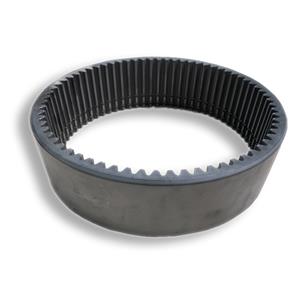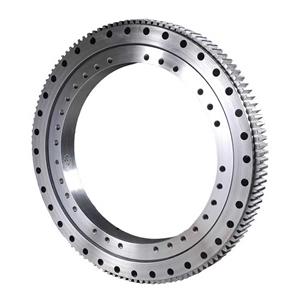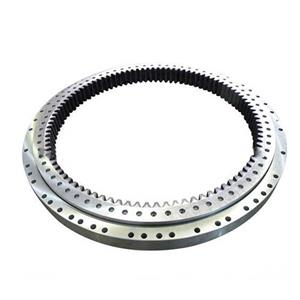What are the factors affecting the model parameters of slewing ring bearings?
Slewing ring bearings are important components in construction machinery and heavy equipment, used to support and rotate the rotary motion of equipment. Different types of slewing ring bearings have different parameters and characteristics, and it is very important to select the appropriate model parameters for specific application requirements. This article will focus on the factors that affect the model parameters of slewing ring bearings in detail.
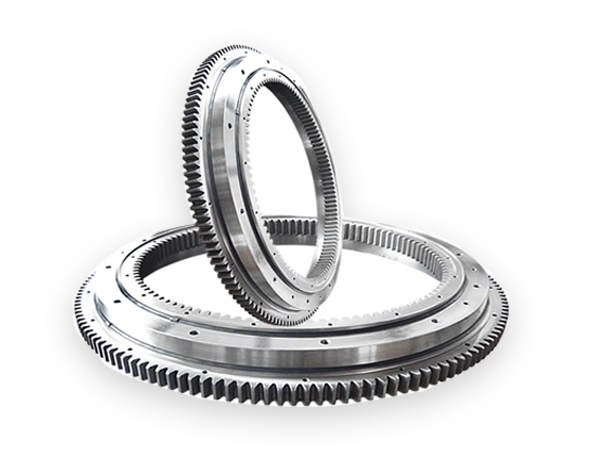
Factors Affecting Model Parameters of Slewing Ring Bearings
1. Load capacity
The load capacity of the slewing ring bearing refers to the large moment and radial and axial load it can bear. When selecting slewing ring bearings, it is necessary to ensure that the rated load of the bearings can meet the requirements according to the working conditions and stress of the equipment to ensure the safe operation of the equipment.
2. Outer diameter and installation dimensions
The outer diameter of the slewing bearing determines its matching relationship with other parts of the equipment. The installation dimensions include installation hole diameter, hole distance and bolt holes, etc., which are used to determine the installation position and method of the bearing. When selecting a slewing ring bearing, it is necessary to select a suitable outer diameter size and installation size according to the design and installation requirements of the equipment to ensure that the bearing and the equipment cooperate well.
3. Speed limit
The rotational speed limit of the slewing ring bearing refers to the maximum rotational speed it can bear. Different types of bearings have different speed limits due to differences in structure and materials. When selecting slewing bearings, it is necessary to consider the operating speed of the equipment to ensure that the speed limit of the bearing can meet the requirements to avoid premature damage to the bearing.
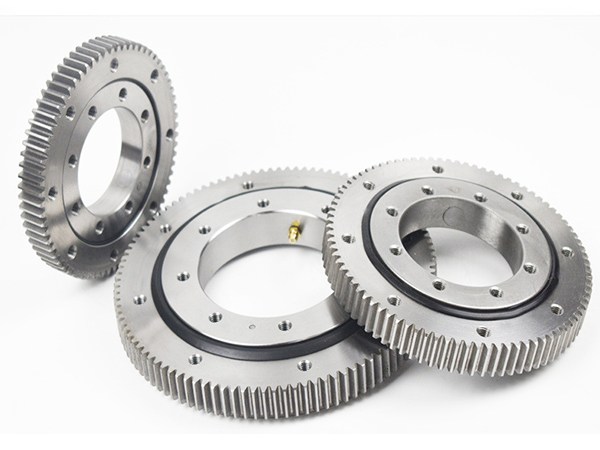
4. Rigidity and precision
The stiffness and precision of the slewing bearing directly affect the movement precision and stability of the equipment. Stiffness refers to the degree of deformation of the bearing under stress. The greater the stiffness, the smaller the deformation and the higher the motion accuracy. Accuracy refers to the machining accuracy of the inner and outer rings of the bearing and the accuracy of the bearing fit. The higher the accuracy, the better the stability and reliability of the movement. When selecting slewing ring bearings, it is necessary to select the appropriate stiffness and accuracy grade according to the motion requirements of the equipment to meet the motion accuracy and stability requirements of the equipment.
5. Life and reliability
The life of a slewing ring bearing refers to the time it can operate normally under specific working conditions. Bearing life is closely related to load, speed, lubrication conditions and other factors. When selecting slewing ring bearings, it is necessary to consider the working conditions and service life requirements of the equipment, and select bearings with sufficient life and reliability to ensure long-term stable operation of the equipment.
6. Lubrication method and maintainability
The lubrication methods of slewing ring bearings include oil lubrication and grease lubrication. Different lubrication methods have different characteristics and scope of application. When selecting slewing ring bearings, it is necessary to select a suitable lubrication method and maintenance cycle according to the working environment and maintenance requirements of the equipment to ensure good lubrication and maintenance of the bearings.
The factors affecting the model parameters of slewing ring bearings are probably the above points. When selecting slewing ring bearings, factors such as the reputation of the manufacturer and after-sales service must also be considered. Choosing a well-known brand and a manufacturer with good after-sales service can provide more reliable bearing products and comprehensive technical support.

